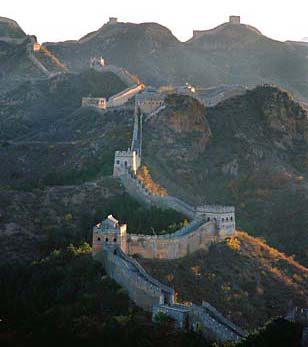A two-year study carried out by the State Administration of Cultural Heritage and the State Bureau of Surveying and Mapping used GPS and infrared devices to determine that there were 3889 miles of wall sections, 223 miles of trenches, and 1387 miles of hills and rivers (natural defenses) making the entire barrier 5,488 miles long.
Portions of the wall, some concealed by hills or mounds of earth and sand were discovered by GPS and infrared techniques. The newly mapped parts of the wall were built during the Ming Dynasty (1368-1644) to protect against northern invaders and were buried over time by sandstorms. Recent studies by Chinese archaeologists indicate that the parts of the wall in Gansu may disappear entirely within 20 years due to sandstorms.
I was fortunate enough to visit a part of the Great Wall for the first time in 1994 on a business trip. It was early enough in China’s great rush towards modernization that the tourist area I visited had not yet been overrun with much of the tourist “circus” that surrounds it today. I went again in 2002 taking my parents and my partner, and even with the added tourist venues (like a roller coaster, additional shops, etc), I was still in awe of the Great Wall and the effort it must have taken to build it.
The trip to China, the Great Wall, and everything else we saw, will remain one of my most precious memories, as it was the only trip I took to China (our ancestral home) with my parents. This latest discovery about the Great Wall, reminds us that it’s never too late to learn about our past. And for those of us that are Asian, taking a trip to our ancestral home is one of those activities of a lifetime.








